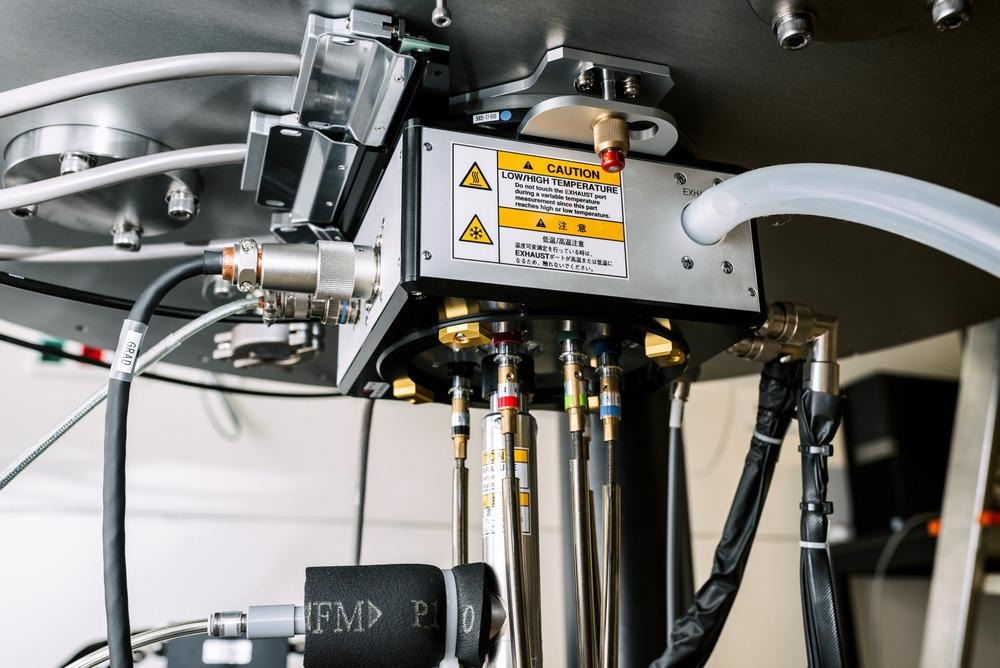Near-infrared (NIR) spectroscopy is now one of the most appealing and widely used methods of analysis over the last four decades as it provides a non-destructive analytical tool that allows fast and concurrent qualitative and quantitative classification of a wide range of samples. The relevance, physical principles, uses, and future possibilities of computational NIR spectroscopy are discussed in this article.

Image Credit: Forance/Shutterstock.com
Why is Computational NIR Spectroscopy Important?
Computational NIR spectroscopy is widely used in a variety of disciplines as an analytical technique for quantitative and qualitative analysis. This approach has become especially well-established in the agricultural and food sectors, as well as the pharmaceutical industry, with a focus on natural goods, environmental analysis, and generally acknowledged material characterization.
The primary distinction between NIR and other spectroscopic methods is shown by different kinds of vibrational bands. Overtones and combination bands of the respective fundamentals found in other spectra fill NIR spectra. In NIR spectra, the strength of some bands is increased. At the same time, the intensity of NIR bands originating from related species is significantly reduced.
Advantages and Limitations of Computational NIR Spectroscopy
In real-world applications, the increased permeability of NIR radiation caused by lower band intensities allows for non-destructive investigation, while sample dilution in a non-absorbing media is necessary for equivalent usefulness in mid-infrared (MIR) spectroscopy.
When compared to MIR, the availability of comparatively affordable photodetectors (as opposed to term detectors required for MIR devices), glass optics, and NIR-specific fiber probes give significant benefits to this method.
However, the inherent complexity of NIR spectra, as well as the difficulties in direct interpretation, continue to be limiting constraints. NIR spectra's wide absorption line morphologies comprise a significant number of overlapping bands, giving birth to numerous bands. In many circumstances, the absence of a recognizable 'fingerprint' of chemical groups makes direct interpretation of NIR spectra difficult.
Physical Principles of Computational NIR Spectroscopy
NIR spectra are dominated by harmonics and composite bands, i.e., non-fundamental transitions since there are no IR-active fundamental bands beyond 4000 cm 1.
Vibrational self-consistent field (VSCF), vibrational second-order perturbation theory (VPT2), and vibrational configuration interaction are among the theoretical frameworks accessible for NIR spectroscopy (VCI). Nonetheless, even these more effective approaches have long been prohibitively costly for routine NIR spectroscopy applications.
VCI is often discarded as a viable method for analyzing any system with more than a few atoms due to its high computational cost. The VSCF technique is more inexpensive and more adaptable, and it is presently employed in a wide range of practical applications.
Applications of Computational NIR Spectroscopy
Because of a unique synergistic mix of properties, NIR spectroscopy is now frequently employed in current analytical applications. Its universality, broad application, simple equipment, and cheap cost are significant benefits in qualitative and quantitative analysis.
Computational NIR spectroscopy may be utilized for quick product identification, categorization, and quality control, as well as for determining product attributes (chemical and physical) and component concentrations in-process applications.
The ability to use sturdy, affordable optical fibers to build a handy optical probe for obtaining the spectrum data on which the material identification is based is a key benefit for industrial applications. It is utilized not only for material identification throughout the formulation process, from raw materials to intermediates and final products but also for quantitative analysis.
Quantitative material analysis is intrinsically more involved than identification and requires a more comprehensive calibration set upon which to base fresh sample analysis.
Recent Advances in Computational NIR Spectroscopy
Instrumentation has been continuously developed in response to significant industrial demand. Analytical NIR spectroscopy is now an active research topic with a large scientific and professional community participating.
Anharmonic quantum chemical computations were used in a recent work published in the journal Molecules to simulate and analyze a caffeine near-infrared (NIR) spectrum. First and second overtones, as well as binary or ternary combination tones, were generated, perfectly matching the actual spectrum's line form in the infrared region.
The computations allowed for a thorough examination of caffeine's NIR spectra, including weak bands caused by second overtones and ternary combinations. The NIR spectrum of caffeine was shown to be very complicated, with multiple overlapping bands discovered underneath the reported spectral line form.
Future Perspective
The rising relevance of anharmonic quantum mechanical computations to addressing difficulties in both fundamental NIR spectroscopy and its analytical applications reveals tremendous promise.
Recent research has significantly improved our knowledge of the NIR spectrum. Physical chemistry research and the development of NIR spectroscopy applications are now being explored as frontiers. Detailed NIR band assignments provide novel physical insights, such as the consequences of intermolecular interactions in NIR spectra.
Furthermore, calibration models may be interpenetrated with comprehensive information on the sources of NIR bands. By incorporating interpreted chemical information into the existing analytical framework, these options offer an important bridge to expanding the application potential of NIR spectroscopy.
More from AZoM: What is Glow Discharge Optical Emission Spectrometry
References and Further Reading
Beć, K. B., & Huck, C. W. (2019). Breakthrough Potential in Near-Infrared Spectroscopy: Spectra Simulation. A Review of Recent Developments. Frontiers in Chemistry. Available at: http://dx.doi.org/10.3389/fchem.2019.00048
Beć, K. B., Grabska, J., & Huck, C. W. (2021). Current and future research directions in computer-aided near-infrared spectroscopy: A perspective. Spectrochimica Acta Part A: Molecular and Biomolecular Spectroscopy; Available at: https://doi.org/10.1016/j.saa.2021.119625
Beć, K. B., Grabska, J., & Huck, C. W. (2022). In silico NIR spectroscopy – A review. Molecular fingerprint; interpretation of calibration models; understanding of matrix effects and instrumental difference. Spectrochimica Acta Part A: Molecular and Biomolecular Spectroscopy. Available at: https://doi.org/10.1016/j.saa.2022.121438
Grabska, J., Beć, K. B., Ozaki, Y., & Huck, C. W. (2021). Anharmonic DFT Study of Near-Infrared Spectra of Caffeine: Vibrational Analysis of the Second Overtones and Ternary Combinations. Molecules. Available at: https://doi.org/10.3390/molecules26175212
Disclaimer: The views expressed here are those of the author expressed in their private capacity and do not necessarily represent the views of AZoM.com Limited T/A AZoNetwork the owner and operator of this website. This disclaimer forms part of the Terms and conditions of use of this website.